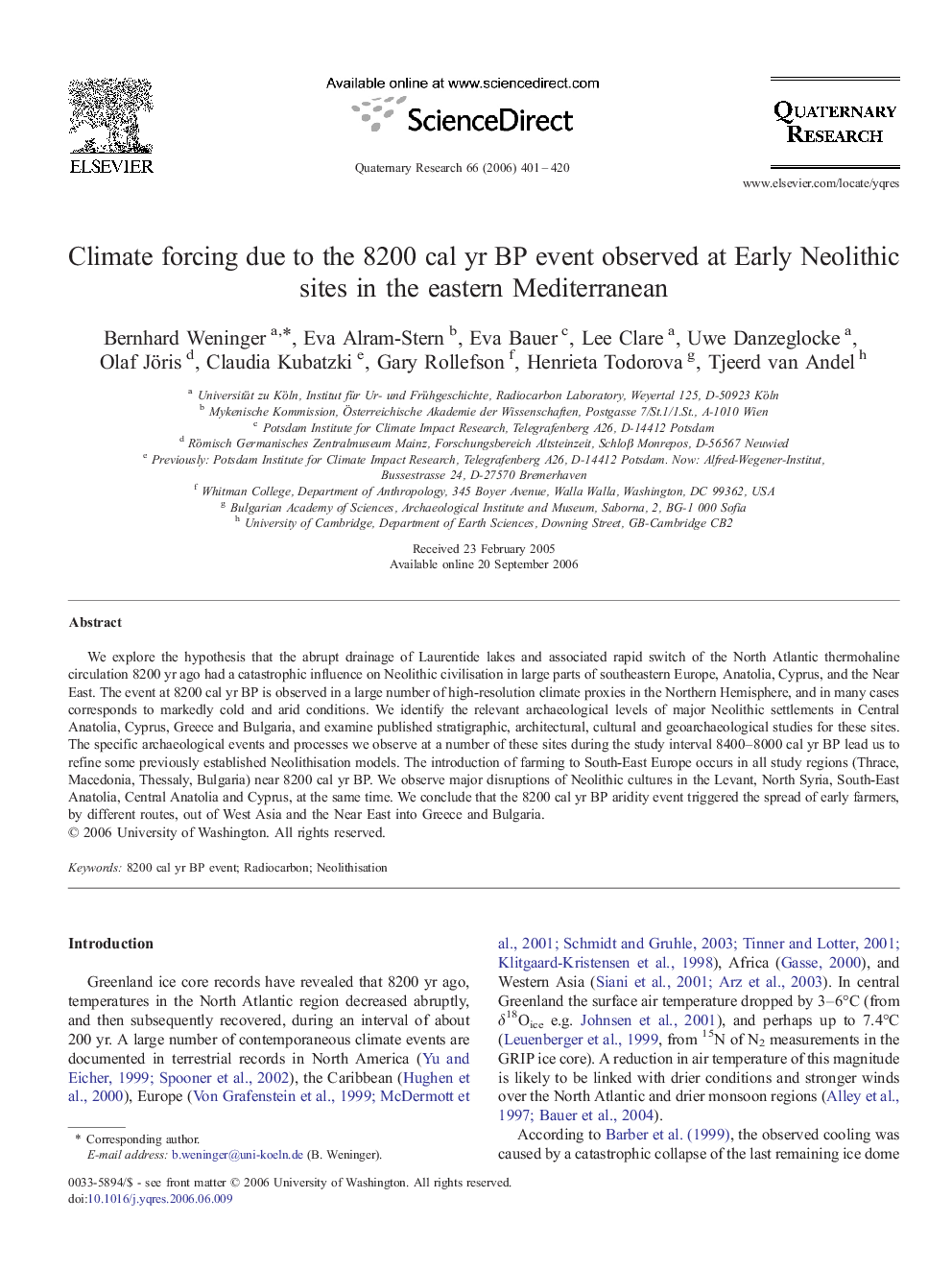| Article ID | Journal | Published Year | Pages | File Type |
|---|---|---|---|---|
| 1045721 | Quaternary Research | 2006 | 20 Pages |
We explore the hypothesis that the abrupt drainage of Laurentide lakes and associated rapid switch of the North Atlantic thermohaline circulation 8200 yr ago had a catastrophic influence on Neolithic civilisation in large parts of southeastern Europe, Anatolia, Cyprus, and the Near East. The event at 8200 cal yr BP is observed in a large number of high-resolution climate proxies in the Northern Hemisphere, and in many cases corresponds to markedly cold and arid conditions. We identify the relevant archaeological levels of major Neolithic settlements in Central Anatolia, Cyprus, Greece and Bulgaria, and examine published stratigraphic, architectural, cultural and geoarchaeological studies for these sites. The specific archaeological events and processes we observe at a number of these sites during the study interval 8400–8000 cal yr BP lead us to refine some previously established Neolithisation models. The introduction of farming to South-East Europe occurs in all study regions (Thrace, Macedonia, Thessaly, Bulgaria) near 8200 cal yr BP. We observe major disruptions of Neolithic cultures in the Levant, North Syria, South-East Anatolia, Central Anatolia and Cyprus, at the same time. We conclude that the 8200 cal yr BP aridity event triggered the spread of early farmers, by different routes, out of West Asia and the Near East into Greece and Bulgaria.
